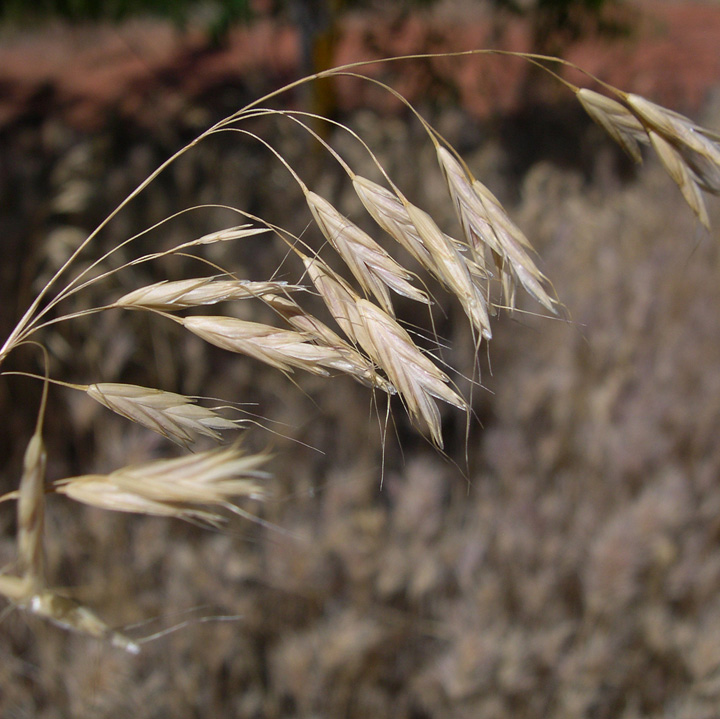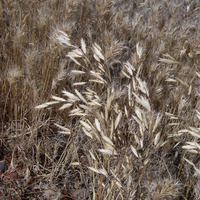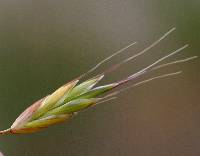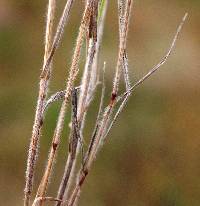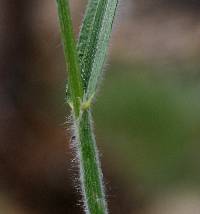|
|
|
|
Family: Poaceae
|
Much like no. 16 [Bromus commutatus Schrad.], and apparently passing into it, but the panicle avg a little larger, and with slender, flexuous, spreading to drooping branches; spikelets (13-) 15-30 mm; lemmas (6-)7.5-9 mm, 1.2-2.2 mm wide in side view; awns 7-12 mm, flexuous or recurved-divergent, the longest ones of a spikelet more than twice as long as that of the lowest lemma; palea 1-2.5 mm shorter than the lemma; 2n=14. Native of the Old World, intr. as a weed in waste places from N.H. and Vt. to Ga., w. to the Pacific. Gleason, Henry A. & Cronquist, Arthur J. 1991. Manual of vascular plants of northeastern United States and adjacent Canada. lxxv + 910 pp. ©The New York Botanical Garden. All rights reserved. Used by permission. FNA 2007, Field Guide to Forest & Mtn. Plants of N AZ 2009, Ann. Checklist GCNP 1987 Common Name: Japanese brome Duration: Annual Nativity: Non-Native Lifeform: Graminoid General: Introduced annual with erect stems 20-70 cm, can be solitary or loosely grouped, with inflorescence an open panicle with spreading, often drooping branches. Vegetative: Culms erect or ascending, 20-70 cm long, blades 10-20 cm long, 2-4 mm wide, pilose, flat; ligules 1-2 mm, pilose, toothed; sheaths densely pilose, upper sheaths may be pubescent or glabrous. Inflorescence: Panicle loose, nodding, pyramid-shaped, 10-22 cm long, 4-13 cm wide; branches flexuous, often longer than spikelets, often with 2 or more spikelets; spikelets 2-4 cm, lanceolate, florets 6-12; glumes 4-8 mm long, unequal, lower glume slightly smaller, lanceolate, 5-veined, upper glume 7-veined; lemmas 7-9 mm long; awns 8-13 mm long, curved or bent at maturity; anthers 1-1.5 mm long. Ecology: Found in fields, along roads, and in disturbed areas at 2800-3100 ft. Flowers April-September. Distribution: Widely distributed throughout the United States Notes: Native to Europe and Asia. Is commonly part of mixed prairie communities; competes vegetation that provides better forage, thus decreases plant biodiversity. Similar to Bromus arvensis, which has slightly taller stems at 20-110 cm tall, purple tinged spikelets and anthers 2-5 mm long. Ethnobotany: Unknown Etymology: Bromus is from Greek bromo, for stinking, while japonicus means of or belonging to Japan. Synonyms: None Editor: LKearsley, 2012 |


